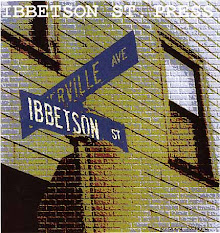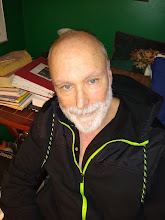Somerville was an amazing place to teach public school art and also to have a studio on Tyler Street at the former Artisans Asylum location. Somerville is an art -minded community, and expression of the arts was everywhere outside the confines of the school building. At one point in my career (1999) the city council addressed the graffiti on the wall at Dickerman playground on Craigie Street by enlisting me to bring my 6th graders to paint a mural at that location. That was a triumph for community pride.
The former Ames Paper company donated boxes of paper items appropriate for many art projects. They offered mounting board for student paintings. One year they printed a set of colorful note cards representing the artwork of my students at the John F. Kennedy School. The Davis Square Artbeat event offered me a window to display student art. A group of eighth graders met me there to arrange the display in July even though school was on summer break. A former bank in Davis Square granted my 6th grade a bus and free admission to a special Monet exhibit at the Boston Museum of Fine Arts. In return the entire sixth grade painted a 17 foot mural of waterlilies for the bank. I was always an ARTIST teacher, not simply an art teacher. The Somerville Museum hosted exhibits featuring the work Somerville art educators. The above events demonstrate some of my community involvement in Somerville. During my 24 years of teaching in Somerville, I was actively involved in my own art -making and expanded my repertoire of materials and media.
You have two canvases you work with—one on copper, and one on paper. How is your jewelry connected to your painting?
I was always a painter! I have an MFA degree in art education and painting from Boston University. Before that I was a painting major at Skidmore College. I entered the enameling world as a painter. I self taught enameling in 1980 in a high school teaching position. The instructor who oversaw the kilns was on sabbatical. I was awed by the colors of glass! Color was always my primary focus in art making.
I had no metalsmithing skills. Folks admired my enameled pieces and suggested that I make wearable jewelry. This idea intrigued me. During my tenure in Somerville Public Schools, I took silversmithing classes from colleges that had student interns doing a practicum with me. The remuneration was a free class. I had many college interns at the John F. Kennedy School in Somerville. Today I oversee the enamel studio at ArtisansAsylum.com now located in Allston.
You have written that observing children at play is an inspiration for some of your work. Explain.
My 24 years teaching K-8 in Somerville were truly inspirational for me regarding my own creative work. I was observing children fearlessly and spontaneously trying different approaches to color, dabbling, exploring outcomes, and combining disparate media in their creative expression. In turn I experimented with my own work. I was fortunate to create my own instructional units. Many days after school, I would engage in my own “creative play” trying new approaches with the goal of developing ideas for lesson planning. This exploration impacted my own growth as a creative artist.
Your paintings of scenes from Boston on display at the Bloc Cafe in Union Square are mainly vibrant watercolors of scenes in Boston, and just beyond. How do you choose what you paint? The paintings are realistic, do you ever dabble in the abstract?
My current body of work is an expansion of my membership in a group called Urban Sketchers Boston. Urban Sketchers is an international Facebook group. There are no membership fees and anybody can show up for a two hour informal sketching session at a designated location. Frankly, I was inexperienced painting architecture, and I was primarily a landscape painter. I think landscapes have many abstract elements in organic forms and color relationships. For the last few years I have worked hard to study buildings and how they relate to the urban landscape. Viewers might recognize the locations but my work remains expressionistic with my bold usage of intense color. Choosing a subject to paint is the artist’s first creative decision. I spend a lot of time exploring a location, and I create thumbnail sketches before deciding on the composition I want to paint. I get a lot of satisfaction from folks who share with me their own connections to locations of my paintings
Why should we view your work?
I think all artists hope for an audience.
Creating the work is a sole activity, but once I frame and display my art, I am wishful for an audience to view it. I want to share what I saw and where I was. I am hopeful others will view and appreciate it. This exhibit, PLACES AROUND BOSTON, will be on display until the first week of March, 2025.





































